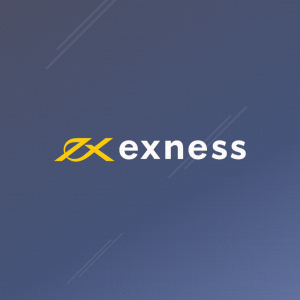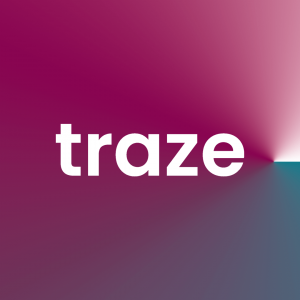
For a trader, one of the most important market forces to look out for is the price trend of an asset. Given the volatile nature of financial markets, traders rely heavily on technical tools like Fibonacci retracements to make better sense of price charts. Even the slightest price movement can trigger entry or exit points that could culminate in losses or profits.
A retracement happens when an asset price changes direction momentarily and should not be a major cause for concern. Instead, a retracement may be taken as a signal for how to correctly identify potential stop Loss or Take Profits points.
In the case of a retracement, price direction will revert either fully or partially to the previous level. Conversely, another scenario where price direction changes for the long-term, called a reversal, could prompt a trader to sell or buy an asset altogether.
The difference between retracement and reversal may appear subtle but is key to determining a trader’s next course of action.
The Right Entry and Exit Points: Retracement Vs Reversal
Retracement and reversal trends are very much applicable in the forex market as it is in other financial markets. A trend retracement which is a series of retracements are pullbacks during an open trade that don’t impact the overall price trend. Similarly, a trend reversal where price trends continuously fluctuate from uptrends to downtrends and vice versa is inevitable in trading. It stands to reason then for traders to implement risk minimising measures in their trade.
For beginner forex traders, analysing market trends may appear straightforward, such as buying when a currency pair’s price is on the rise, and selling when the price is trending downward.
Most new forex traders would be keen to ride a trend and then profit when they catch that trend. But, as seasoned traders know, it’s necessary to understand and use technical tools like retracements and reversals to plot their trade entry and exit points. If a trader were to incorrectly guess that a retracement was a reversal, they would either enter or exit the trade (open or close their position) too soon.
To single out a reversal, it’s important to be able to identify a trend the uptrends and downtrends within. In simple terms, a trend in a market is made up of whether higher highs or higher lows follow the higher highs in a market.

Taking an uptrend as an example: an uptrend would mean that higher highs are followed by higher highs, and higher lows are followed by higher lows. A first lower high that follows a higher high may or may not be a reversal. But, if along with this, a first lower low after the previous higher low is also detected then it’s more likely that a potential reversal may occur in the trend. If this were the case, then it would signal a bearish reversal where a trader could consider exiting a long position and entering a short position.
Fibonacci Retracement Strategy in Forex Trading
A technical analysis tool commonly used in forex trading is Fibonacci retracements which are retracement levels that show potential support and resistance levels in a forex chart. These Fibonacci retracement levels are horizontal lines derived from the Fibonacci sequence and indicate different percentages. The four Fibonacci retracement levels are 23.6%, 38.2%, 61.8%, and 78.6% while a fifth percentage, although technically not a Fibonacci ratio, 50% is also accepted.
With Fibonacci levels, forex traders are able to strategise their entry points, stop-loss and take profit orders. Among the plethora of technical analyses that help traders do the same, Fibonacci retracement levels are favoured for the objectivity they provide traders. Due to the Fibonacci being a numerical form of trading strategy, many traders find it easier to keep their emotions in check while trading.
The “golden ratio” is used as a form of measurement to pinpoint entry and exit points in a trade but because the Fibonacci retracements strategy is non-formulaic, pundits still caution traders against using it without fully understanding its concepts.
Trend trading is where most traders utilise Fibonacci retracements levels to make low-risk entries. Some of the applications of Fibonacci retracement levels or percentages as forex strategies are:
- Going long near the retracement level of 38.2% with a stop-loss order placed slightly below the 50% level.
- A retracement level close to 50% indicates a good time to buy with a stop-loss order at slightly below 61.8%.
- Fibonacci retracement levels can be used as take profit targets when a trader opens a short position at the top of a downtrend.
Doubtless, Fibonacci retracements as a trading strategy is preferred for how it simplifies the decision-making process, but traders also often use it along with other indicators to make more informed decisions on their trade.
Supplementing Fibonacci Retracements with Extensions
Aside from retracement levels, Fibonacci extensions are another tool that can be added to a trader’s arsenal of strategies. Rather than just focusing on stop-loss orders, profit targets are something else that traders can take advantage of to acquire a fair profit on their trade.
Considering how uncertain reversals and retracements are in a trade and how they can easily be confused for the other, trailing stop-loss orders can be placed to minimise a trader’s risk. Here, a trader specifies the maximum amount or percentage they are willing to lose on a trade at which point they would also exit the trade. On the contrary, profit targets are price levels that a trader can set at which they would exit a trade in the hopes of gaining or taking profit. This is where Fibonacci extensions come into play.
Fibonacci extensions help traders in determining how much further a price movement could go once a pullback ends, meaning where the price will go following a retracement. Additionally, extension levels indicate possible price reversals.
Like its retracement counterpart, Fibonacci extension levels are also based on Fibonacci ratios. The more well-known ones are 61.8%, 100%, 161.8%, 200%, and 261.8%.
Where Fibonacci retracement levels show how long a retracement could continue, Fibonacci extensions show where the price will go once a retracement ends with what’s called Impulse Waves. These inform traders in more detail on market trends and in so doing help them gain a better measure of market forces and conditions for them to place profit targets and locate potential support or resistance areas.
Like Fibonacci retracements, Fibonacci extensions are not meant to be used as a sole indicator for a trader’s purchase decision. Other indicators like candlestick patterns and price action are other indicators that would better aid a trader’s final thoughts on buying or selling their asset.
For any beginner trader, going with the right broker and platform will make the steep learning curve to trading easier to overcome. ZFX is a brokerage that offers MT4 platform that provides new traders with handy analytical tools and indicators for trading. This latest technology and readily available indicators are just the start of how a trader could gain a better understanding of the nuances of trading as a skill.
Do Fibonacci Retracement Levels Work?
Despite the wide popularity of Fibonacci retracements out of all Fibonacci trading tools, they aren’t rid of imperfections. The irony of it is that Fibonacci retracements being derived from a mathematical concept has however no logical justification. The “golden ratio” that Fibonacci retracements are based on may make sense when applied to construction and drawing techniques but in trading no conclusive evidence supports its efficacy. Nonetheless, with many traders applying the Fibonacci retracement strategy and finding worth in it, it can’t be discounted entirely either.
Evidently, traders are divided on whether Fibonacci retracement levels actually work, and which can only indicate potential indicators, corrections, pullbacks and reversals. However, it has been shown to work for traders looking to identify potential changes in price direction which then allow traders to strategise their trade within valuable price trends over the long term. This is made possible by Fibonacci retracement levels showing when price movements will change direction.
Again, Fibonacci retracement levels as a strategy on its own is not sufficient as a forex trading strategy. Rather, it is a trading tool that complements other indicators and technical tools well.
Fibonacci Trading for Long-Term or Short-Term?
Both Fibonacci retracements and extensions can be used for diverse trading timeframes, but the former work relatively better for longer timeframes: a weekly chart instead of a 30-minute chart. Fibonacci retracement levels inform traders more about pullbacks and price action from which traders get a better sense of future trends.
Short-term trading also signals more market volatility which makes potential resistance and support levels less predictable. Due to this, Fibonacci retracements are less reliable when used for short-term charts. Especially in forex trading, traders find value in the Fibonacci strategy for uncovering latent support and resistance levels.
For Fibonacci analysis to be at its most effective for the aforementioned in forex trading, the more past data available the better for trade preparation.
Bottom Line
As much as Fibonacci trading has attracted interest, especially from novice traders, it is a topic of discussion that is both divisive and inconclusive. Traders should consider all options both when delving deeper or dabbling in making use of this strategy.
The verdict might be in with some thought leaders vouching for Fibonacci retracements being able to predict market movements at 70% accuracy. On the flip side, some experts have disqualified the numbers as mere hyperbole.
FAQs
1. Is Fibonacci retracement a good strategy?
Traders are divided on whether Fibonacci retracement levels actually work, and which can only indicate potential indicators, corrections, pullbacks and reversals. However, it has been shown to work for traders looking to identify potential changes in price direction. Fibonacci retracement levels as a strategy on its own is not sufficient as a forex trading strategy. Rather, it is a trading tool that complements other indicators and technical tools well.
2. What is the best Fibonacci retracement level?
Trend trading me more is where most traders utilise Fibonacci retracements levels to make low-risk entries. Some of the applications of Fibonacci retracement levels or percentages as forex strategies are:
- Going long near the retracement level of 38.2% with a stop-loss order placed slightly below the 50% level.
- A retracement level close to 50% indicates a good time to buy with a stop-loss order at slightly below 61.8%.
- Fibonacci retracement levels can be used as take profit targets when a trader opens a short position at the top of a downtrend.
3. Which Fibonacci levels are most important?
The four Fibonacci retracement levels are 23.6%, 38.2%, 61.8%, and 78.6% while a fifth percentage, although technically not a Fibonacci ratio, 50% is also accepted.
4. Does Fibonacci work for day trading?
Both Fibonacci retracements and extensions can be used for diverse trading timeframes, but the former work relatively better for longer timeframes: a weekly chart instead of a 30-minute chart. Fibonacci retracement levels inform traders more about pullbacks and price action from which traders get a better sense of future trends.
5. How do you use Fibonacci correctly?
Fibonacci extensions help traders in determining how much further a price movement could go once a pullback ends, meaning where the price will go following a retracement. The four Fibonacci retracement levels are 23.6%, 38.2%, 61.8%, and 78.6%.
Additionally, extension levels indicate possible price reversals. Like its retracement counterpart, Fibonacci extension levels are also based on Fibonacci ratios (percentages). The more well-known ones are 61.8%, 100%, 161.8%, 200%, and 261.8%.

















